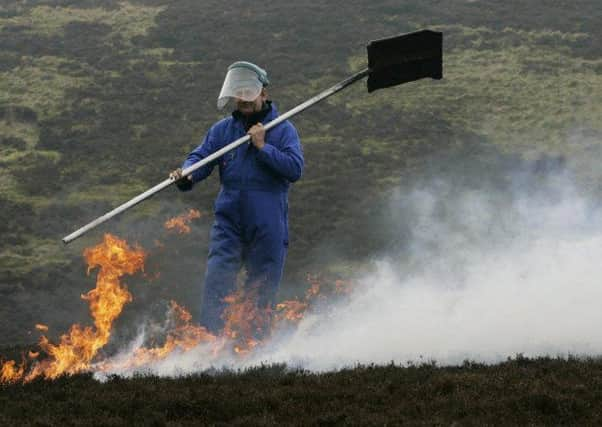Campaigners and landowners clash over burning of Scotland’s grouse moors


However, landowners defended the practice as “vital for upland biodiversity”.
Revive, the coalition for grouse moor reform, which includes the League Against Cruel Sports, said “muirburn” damaged peat and forced mountain hares to “flee for their lives”.
Advertisement
Hide AdAdvertisement
Hide AdRevive campaigner Max Wiszniewski said: “The footage we captured is extremely disturbing, showing vast swathes of heather upland on fire, with flames and smoke billowing for miles, all for the single purpose of protecting grouse which will subsequently be shot for entertainment.
“I’m sure the public will be shocked to see the damage, which is deliberately inflicted on our uplands to create a habitat suitable for one species to the detriment of our environment and wildlife.”
Friends of the Earth Scotland director Dr Richard Dixon said: “We’re growing increasingly concerned about the extent and intensity of burning on grouse moors and particularly the effects of burning over deep peat.
“Where blanket bog is damaged by burning, impacts include a lowered water table and breakdown of the active peat-forming structure, resulting in the carbon store in the peat being released as climate change emissions.
“The Scottish Government must put in place plans to reverse the damaging environmental effects of moorland burning and protect our peatlands as the huge natural treasure they are.”
However, Scottish Land & Estates, which represents landowners, said muirburn benefited the environment.
Spokesman Tim Baynes said: “Muirburn is the traditional way to manage moorland and has been practised for centuries, resulting in the Scotland’s renowned purple heather landscape.
“At this time of year, old moorland vegetation is burnt off to enable fresh heather to grow.
Advertisement
Hide AdAdvertisement
Hide Ad“The mosaic habitat resulting from muirburn has also given us an extraordinary suite of rare birds and mammals, which is the envy of other countries. Carrying out muirburn is vital for upland biodiversity.
“Muirburn is very visible and the amount of smoke from small fires can be deceptive. The public should not be alarmed by the sight of smoke on the hills.
“It is important that when muirburn is called into question that there is clarity over the exact circumstances, rather than simply saying that fire on a hill is wrong and should be stopped.
“Recent research shows that careful muirburn has minimal impact on the peat layer below and can actually be beneficial because the charcoal formed by burning is a stable form of carbon storage, helping to prevent it being released into the atmosphere.”
The Scottish Government said an independent group examining the impact of grouse moor management practices, such as burning and hare culls, was due to report later in the spring.
A spokesperson said a code on muirburn set out the law and good practice.
She said: “While we are not aware of any recent instances of the code not being complied with, anyone concerned about a potential breach should contact the police.”